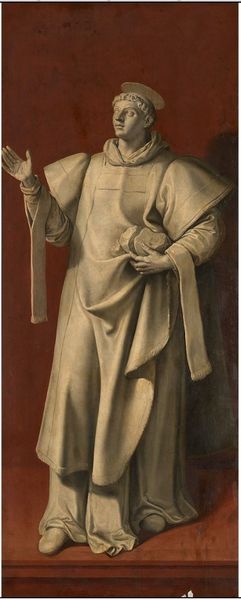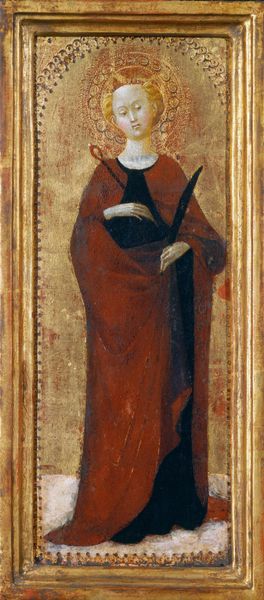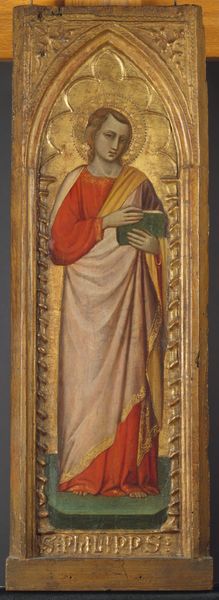
painting, oil-paint
#
portrait
#
narrative-art
#
painting
#
oil-paint
#
figuration
#
oil painting
#
history-painting
#
italian-renaissance
#
early-renaissance
#
portrait art
#
fine art portrait
Copyright: Public domain
Editor: We're looking at Antoniazzo Romano's "Saint Francis of Assisi," painted in 1481 using oil. I find the contrast between the gold halo and the drab Franciscan robe particularly striking. What stands out to you in this composition? Curator: The painting is quite compelling as an exercise in Early Renaissance formalism. Note how the composition divides into distinct zones. The background, a flattened plane of deep blue, throws forward the figure. What is your interpretation of the geometric structure? Editor: I guess it is fairly straightforward. Saint Francis is centered, very symmetrical. Does that simplicity reflect a spiritual message, or is it simply a product of the artistic conventions of the time? Curator: It’s more complex than mere simplicity. Consider the placement of the red book in his left hand and the crucifix in his right. Are they truly balanced, or does one side subtly outweigh the other? It’s a dialogue between stasis and subtle asymmetry. Editor: Interesting, I hadn't considered that imbalance. And the wounds on his hands – their depiction feels… restrained? Curator: Precisely. The stigmata, presented almost as design elements, contribute to the formal tension. Look how they echo the red of the book, drawing your eye across the figure and through the space. Are these simply details to build visual harmony? Or are they symbolic indicators of pathos? Editor: So you are saying it is about both structure AND content? I tend to think of symbolism and meaning separately, but the painting brings them together so cleverly! Thanks for this way of seeing it. Curator: Indeed, we find greater insight when we analyze and decode the elements within a work to expose meaning. I too learned a lot from this viewing.













